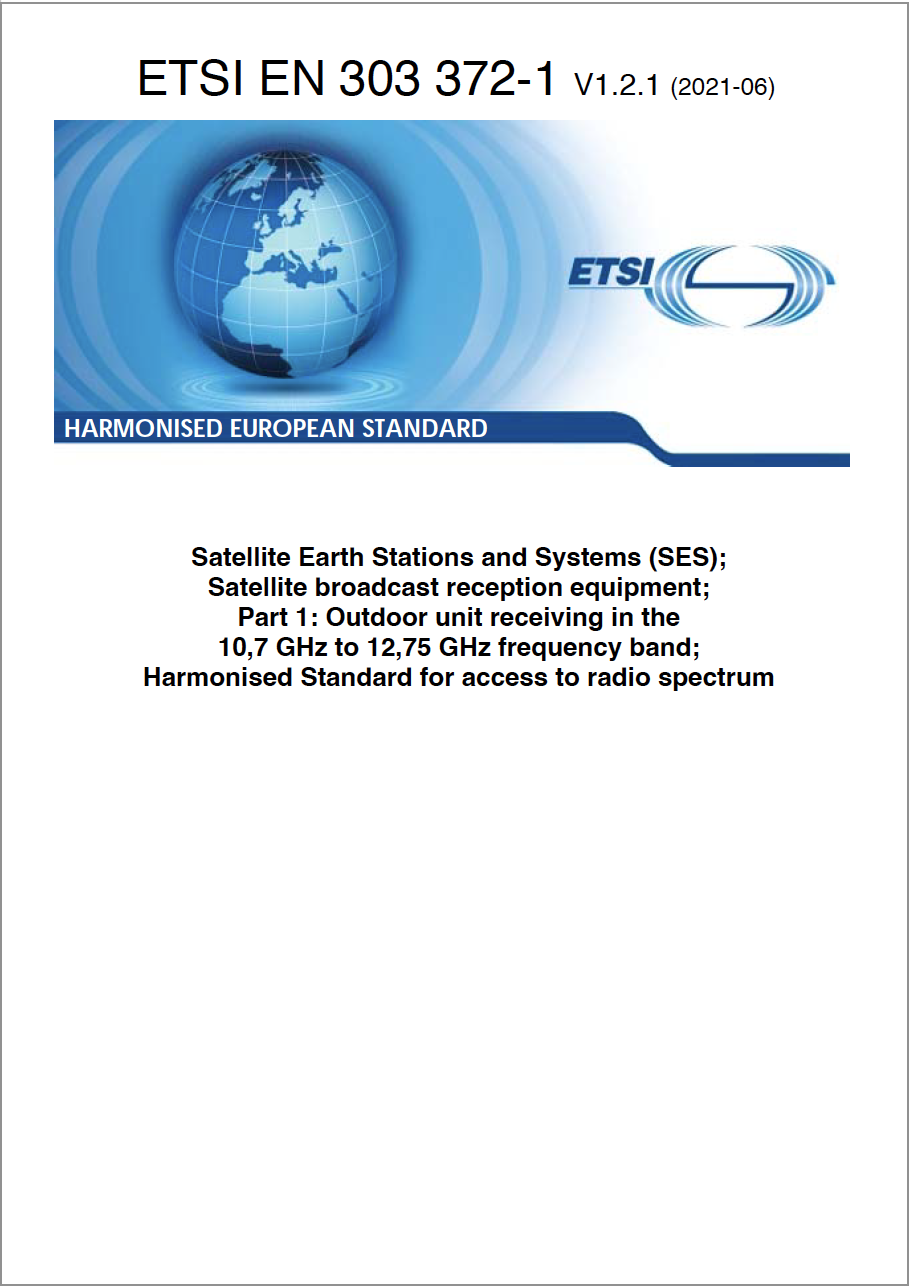ETSI EN 303 372 is a "spectrum use“ standard under the Radio Equipment Directive that applies to satellite broadcast reception equipment. I was in ETSI the rapporteur for this standard. I am happy to provide in the following some side information and background on the standard.
The Radio Equipment Directive of the European Union requires that radio equipment on the market or in use in Europe does comply with technical requirements on safety, EMC and efficient use of spectrum. The usual way to demonstrate this compliance is to test against certain technical standards. ETSI EN 303 372 is a standard that has been created for this purpose. It covers efficient use of spectrum, or short spectrum use, of satellite broadcast reception equipment.
Part 1 applies to Ku-band outdoor units, Part 2 to indoor units. These parts are separate documents, with numbers ETSI EN 303 372-1 and ETSI EN 303 372-2. Special concepts including Sat>IP and single cable distribution are covered by these parts, as described in introduction and annexes. ETSI may create further parts as required, for example for Ka-band outdoor units.
Annex C of part 1 enables the existing market for separately sold LNBs, which may be combined with other antenna components to an outdoor unit, or may replace another LNB. These LNBs are strictly speaking LNBFs, since they contain the antenna feed (usually a horn). The characteristics of the feed determine the antenna gain pattern of the overall outdoor unit. Replacing an LNBF by a unsuitable LNBF will degrade the performance and cause harmful interference. Annex C defines some characteristics of a generic LNBF. An annex C compliant LNBF can replace another compliant LNBF without causing harmful interference. One can combine a part C compliant LNBF with other antenna components that are designed for such compliant LNBFs.
Readers may be surprised that part 2 contains only two requirements, although a usual indoor unit specification contains many more items. The reason is that other characteristics have no causal relation to efficient use of spectrum. The standard contains an annex that lists these other characteristics for information.
ETSI has published the latest version 1.2.1 of both parts in June 2021. The version takes into account the experience of manufacturers and test labs obtained with version 1.1.1. Requirements and test procedures are now described with more details and free of ambiguities. Moreover, part 1 annex C now takes into account that parabolic reflector antennas for broadcast are typically offset fed.
ETSI standards are available for download free of charge and without registration on www.etsi.org > search > search standards. Direct links: ETSI EN 303 372-1 V1.2.1 (2021-06), ETSI EN 303 372-2 V1.2.1 (2021-06)
The European Commission of the European Union maintains lists of so called harmonised standards. Standards on the list allow demonstrating compliance with essential requirements of a directive, as described above. The list regarding the Radio Equipment Directive can be found here. Part 1 and 2 of EN 303 372 are contained. It is important to note that this standard concerns only the essential requirement efficient use of spectrum. Equipment must be compliant with further standards concerning safety and EMC. Such standards can be found on the list as well.
EN 303 372-1 V1.2.1 is on the list with the restriction that one must not apply the following sentence in clause 4.3.5: “This requirement does not apply in case the ODU is designed for a specific satellite network that makes use of both polarizations”. Obviously, bad polarization alignment increases cross-polar interference between signals on the horizontal and signals on the vertical polarization. However, in satellite networks that use both polarizations, the cross-polar interference is a network internal issue. Therefore, it is out of scope of the Radio Equipment Directive and the sentence is justified. Nevertheless, the European Commission has included the restriction.
I propose to solve the problem by creating part 3 of the standard, which covers Ku-band outdoor units that are specifically foreseen for satellite networks using both horizontal and vertical polarization. Requirements in part 3 will be the same as in part 1, except that clause 4.3.5 is deleted.

